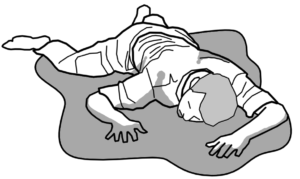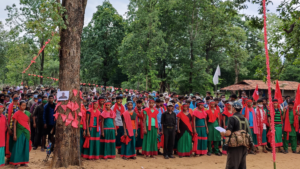AFP's relentless bombings torment civilians

It was reported in July that the 79th IB, a command under the 303rd IBde, planned to drop bombs on the Minapasuk Mandalagan Mountain Range in Negros. This plan supposedly forms part of the counterinsurgency campaign against the New People’s Army (NPA). Before the planned three-day bombing, the military tried to evict residents of 21 villages in two barangays of Calatrava through relentless harassment, threats and intimidation that prompted stern protests by residents and local agencies.
The planned bombing will hit the Northern Negros Natural Park, a key biodiversity area and one of the most widely protected areas in Northern Negros. The bombing would endanger the animals and plants which have long been cared for in the area.
This incident is just one of the many attacks of the Armed Forces of the Philippines (AFP) against civilian communities and forests in the guise of pursuit operations against units of the people’s army.
Relentless
Reports received by Ang Bayan (AB) show that the AFP has dropped at least 591 bombs, fired 589 artillery shells, and conducted 74 rounds of aerial strafing from 2017 to July 15 this year. Actual numbers are even higher because not all aerial strikes and shellings are reported in AB or the mainstream media. Of these, the number of bombing incidents (56) in 2021 was the highest.
Bombing rounds were launched in 36 or 44% of the provinces. From the report, the highest incidence was recorded in Bukidnon (22), followed by Northern Samar, Davao del Norte, Surigao del Sur, Agusan del Sur, Agusan del Norte, North Cotabato, Cagayan, Quezon, Negros Occidental, Sultan Kudarat, Maguindanao, Camarines Sur and Mountain Province.
Of the bombs dropped, only 109 or 18.44% hit NPA camps. Relentless strikes caused more casualties (68 killed and 20 wounded) among soldiers and police of the reactionary state, than on the side of Red fighters (66 killed and 15 wounded). At least 10 civilians were reportedly killed and four were wounded.
The biggest damage caused by direct bombing of civilian communities was wrought in a Moro community in Maguing, Lanao del Sur and a small miner’s camp in Santa Clara, Gonzaga, Cagayan. The bombings are also detrimental to pregnant women and elderly people, and cause severe trauma to children. In total, up to 10,339 families or approximately 60,000 individuals were forced to evacuate because of these.
Data shows that majority of the AFP bombings did not have a clear target. Only 6% of the bombing incidents hit an NPA camp. Up to 82% were carried out in mountain ranges where there was no presence of NPA units. Of these, 35% were aimed directly or near the vicinity of civilian communities and damaged farms and infrastructure.
In bombing suspected NPA camps, the AFP dropped not less than 10 bombs everytime. These created deep holes in the ground and loud noises that traumatize residents, their farm animals, as well as forest animals.
According to the data, the AFP had to drop 10 bombs and multiple bullets to kill a single Red fighter. The AFP uses excessive firepower (about 500- and 250-pound bombs) against NPA camps with makeshift tents. Such powerful bombs were designed to shatter buildings made of cement and steel. (In the next issue: The adverse effects of aerial bombing on the environment).




